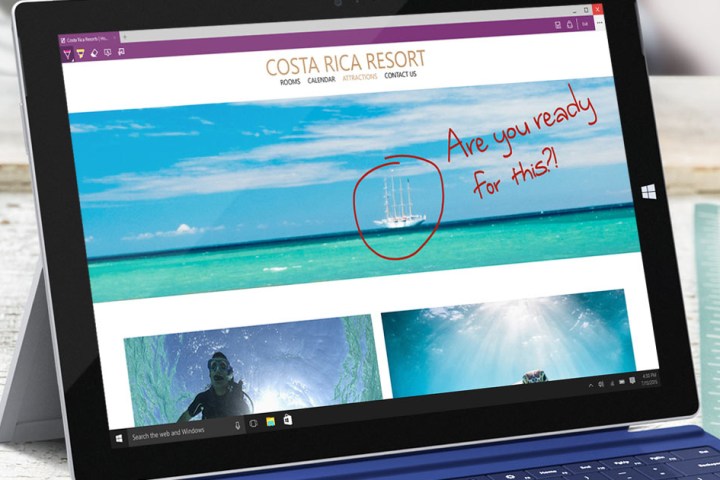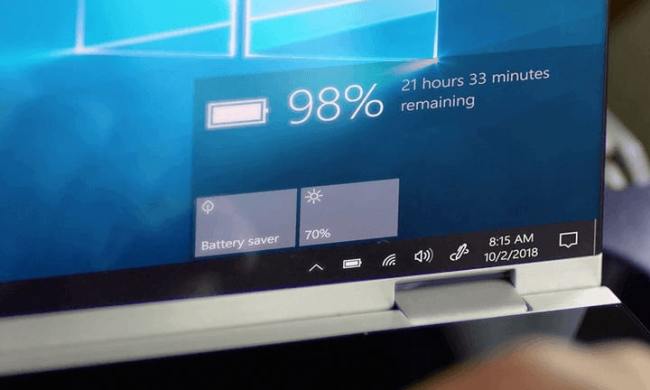
Huyn first posted news about the Chrome browser pop-up in early July, reporting that the battery icon was replaced by an “i” and a pop-up message automatically opened after launching Google’s browser. He wasn’t able to provide a screenshot at the time, but instead went on to voice his opinion about the bashing of Chrome within the Windows 10 environment.
“My idea to solve the ‘Chrome bashing pop up’ issue. Promote a little more the ‘battery usage’ feature on W10. Why not include it in the battery pop up, but stay neutral, no own promotion, don’t be evil,” he said. Later, Huyn posted a concept pop-up window showing the battery usage of each app when active, including Skype and Chrome.
Improved version with a new concept: battery usage by active minutes, A LOT more useful than percentage pic.twitter.com/El1cBaxGaF
— Rudy Huyn (@RudyHuyn) July 4, 2016
Microsoft began its assault on competing browsers and battery usage in June, causing Opera to fire back with its own detailed testing of its browser on a laptop. According to Microsoft, the Edge browser is essentially better at consuming less power than Chrome, Opera in battery saver mode, and Firefox. A chart showed Edge consuming an average of 2,068 megawatts of power and Chrome eating up a larger 2,819 megawatts of power.
“To measure Windows efficiency and identify opportunities, we measure aggregated telemetry from millions of Windows 10 devices around the world,” the company stated. “The billions of data points from these devices are consistent with the lab results, demonstrating that Microsoft Edge is more efficient in real-world, day-to-day use than the competition.”
However, Google is no stranger when it comes to promoting Chrome in other browsers. Visit any Google-related website within Microsoft Edge and Firefox, and you’ll see a pop-up window stating that the site works better in Chrome. That has helped make Chrome the most used browser to date, racking up a 58.26 percent share of the desktop browser market in July 2016, followed by Firefox with a 13.97 percent share, and Safari with a 9.74 percent share.
What Google can’t do is go directly after Microsoft Edge users in a notification on Windows 10. Microsoft’s latest move to lure Windows 10 customers to Edge using its operating system seems reminiscent of the scandal it faced when including its Internet Explorer as a pre-installed, integrated component of the Windows platform. Because of this, Microsoft faced antitrust allegations claiming that it was using its Windows monopoly to force original equipment manufacturers into ignoring browsers offered by competitors.
As for the current battery savings notifications, a Microsoft spokesperson told The Verge that they were created to provide users with “quick” and “easy” information to help them enhance the Windows 10 experience, including ways users can extend the life of their notebook’s battery. The spokesperson also pointed out that Windows 10 customers can use any browser and/or search engine they want.
If you don’t want the browser bashing taking place on your Windows 10 desktop, simply head into the Settings app, click on “Notifications & actions,” and turn off the setting labeled “Get tips, tricks, and suggestions as you use Windows.”


